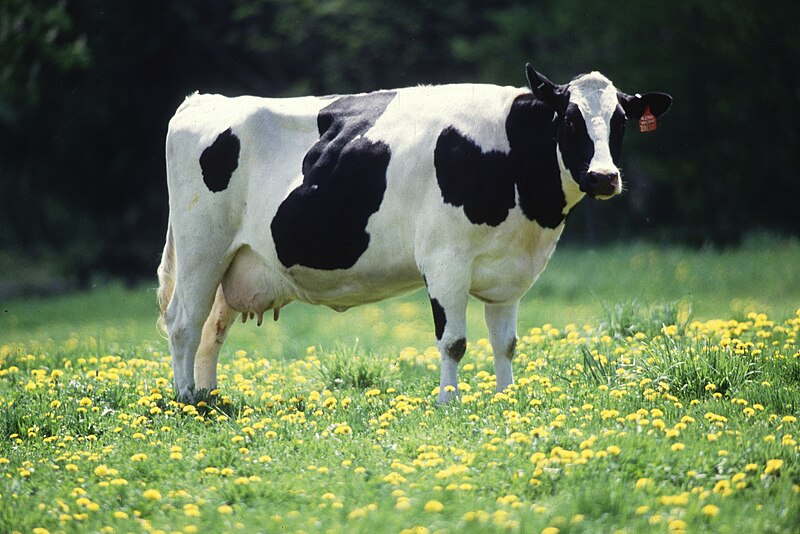Waihona:Cow female black white.jpg

Ka nui o kēia nāmua: 800 × 534 mau pikela. Other resolutions: 320 × 214 mau pikela | 640 × 427 mau pikela | 1,024 × 684 mau pikela | 1,280 × 855 mau pikela | 2,700 × 1,803 mau pikela.
Waihona kumu (2,700 x 1,803 pikela, nui waihona: 887 KB, ʻano MIME: image/jpeg)
Mōʻaukala waihona
Kāomi ma ka lā/hola no ka nānā ʻana i ka waihona ma kēlā manawa.
| Lā/Hola | Kiʻiliʻi | Nā Nui | Mea ho‘ohana | Kaumanaʻo | |
|---|---|---|---|---|---|
| okamanawa | 03:31, 29 'Aukake 2023 |  | 2,700 × 1,803 (887 KB) | ReichLover1997 | Reverted to version as of 21:09, 24 May 2006 (UTC) |
| 00:42, 1 Kepakemapa 2018 |  | 2,190 × 1,680 (725 KB) | Hohum | Cropped, colour adjust | |
| 21:09, 24 Mei 2006 |  | 2,700 × 1,803 (887 KB) | Siebrand | {{Information| |Description= {{nl|Een koe}} {{en|Because much of the cost of a cow is the feed and labor needed to maintain her, fewer but higher yielding cows mean lower priced milk. Dairy herd improvement ultimately benefits consumers. That's why it's j |
Nā Hana waihona
Loulou kekahi ‘ao‘ao i kēia waihona:
Global file usage
The following other wikis use this file:
- Usage on ace.wikipedia.org
- Usage on ang.wikipedia.org
- Usage on an.wikipedia.org
- Usage on ar.wikipedia.org
- Usage on ast.wikipedia.org
- Usage on ast.wiktionary.org
- Usage on az.wikipedia.org
- Usage on az.wiktionary.org
- Usage on ba.wikibooks.org
- Usage on be.wikipedia.org
- Usage on bg.wikipedia.org
- Usage on bjn.wikipedia.org
- Usage on bn.wikipedia.org
- Usage on bn.wikibooks.org
- Usage on bs.wiktionary.org
- Usage on ca.wikipedia.org
- Usage on ca.wikibooks.org
- Usage on ca.wikiquote.org
- Usage on ca.wiktionary.org
- Usage on ceb.wikipedia.org
- Usage on chr.wikipedia.org
- Usage on ckb.wikipedia.org
- Usage on csb.wiktionary.org
- Usage on cy.wikipedia.org
- Usage on dag.wikipedia.org
- Usage on da.wikipedia.org
- Usage on da.wiktionary.org
- Usage on de.wikipedia.org
- Usage on de.wiktionary.org
View more global usage of this file.
